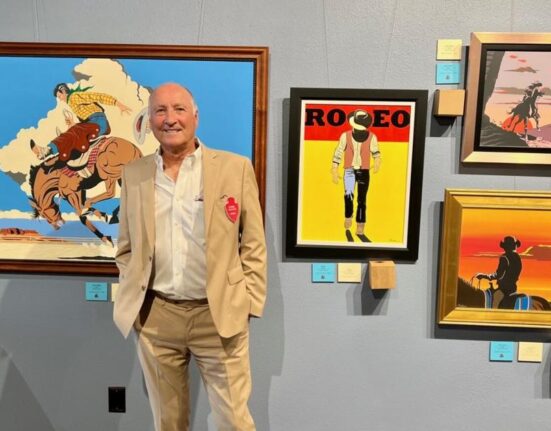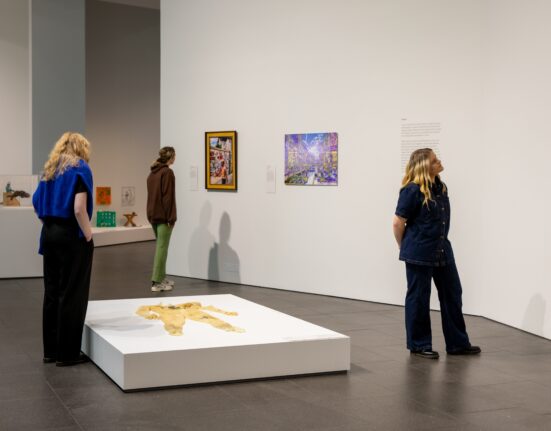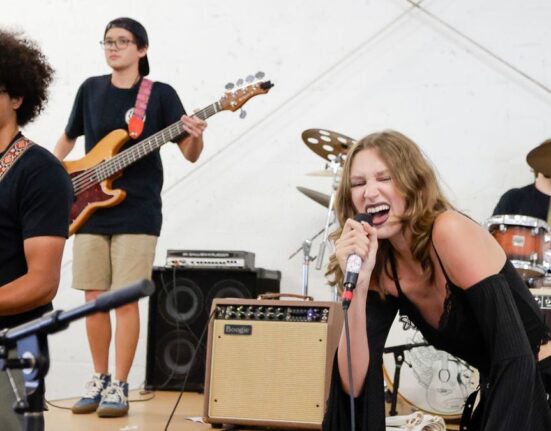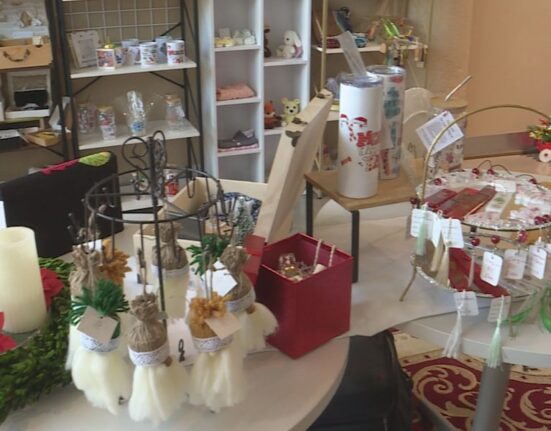friedman benda opens ‘the new transcendence’ in new york
Tucked beneath New York City’s iconic High Line park in Chelsea, Friedman Benda has unveiled its latest exhibition, The New Transcendence. Curated by Glenn Adamson, this marks the final installment of a trilogy which explores the evolving landscape of design. The works on display have been selected from six designers — Ini Archibong, Andrea Branzi, Stephen Burks, Najla El Zein, Courtney M. Leonard, and Samuel Ross — all of which venture into the concept of the spiritual realm within contemporary design. ‘The New Transcendence is not an exhibition about religion in the organized, traditional, or dogmatic sense,’ notes the gallery. ‘Rather, it aims to discover how design can serve as a vehicle for personal and societal transcendence.’
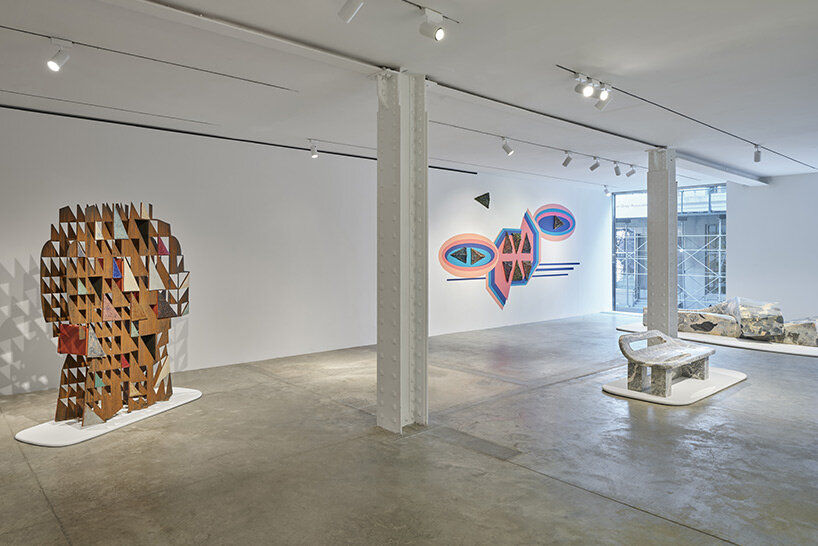 installation view | image © Timothy Doyon, courtesy Friedman Benda
installation view | image © Timothy Doyon, courtesy Friedman Benda
andrea Branzi
The work of Andrea Branzi finds its place in Friedman Benda‘s The New Transcendence, as the iconic Italian designer had famously explored the concept of spirituality in design. He is honored with the inclusion of three works from his Roots series at the entrance of the gallery space. Each chair comprises a composition of hand-painted wood suspended within metal mesh, contrasted with a painted aluminum base. The works have been described by Branzi as ‘similar to thought or philosophy.’ The late designer explained: ‘They don’t have a reason why they’re there. They are brought there by streams, the wind.’ Thus, the artworks align with the theme of the exhibition as curator Glenn Adamson acknowledges that ‘they originate not only from the designer’s process, but as a result of some larger force, perhaps ancestral, perhaps cosmic.’

installation view | image © Timothy Doyon, courtesy Friedman Benda
stephen burks
Another highlight of Friedman Benda’s The New Transcendence is Stephen Burks‘ functional sculpture titled Ancestors (Guardian). Rising six feet in height, the work explores the concept of self-transcendence as the foundation for Black resistance throughout the history of the African-American experience. The intricate patterning was developed through the use of artificial intelligence, and was carefully crafted from both Corten steel and ceramic. It takes on a multi-layered form that symbolizes the intersection between the physical and the metaphysical realms, all while allowing for hidden pockets which serve as functional shelving. Thus, Ancestors (Guardian) bridges the past and present, the handmade and automated, and the symbolic and functional.
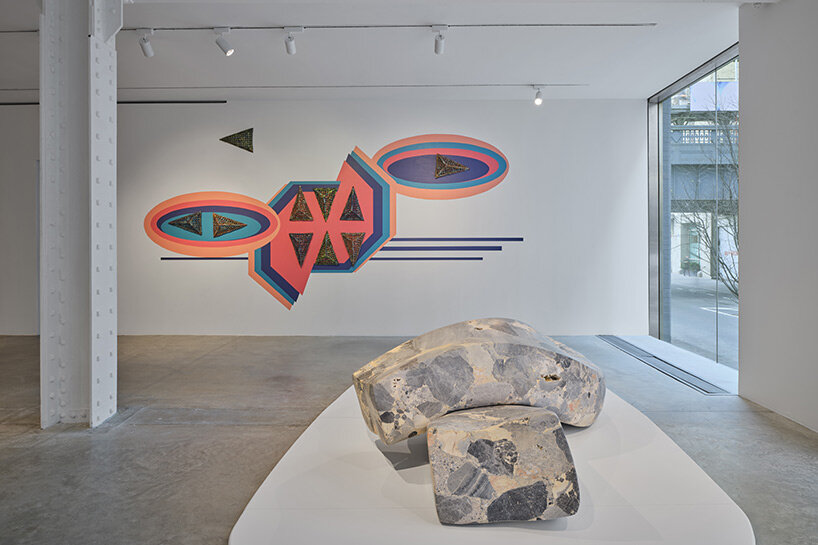
installation view | image © Timothy Doyon, courtesy Friedman Benda
samuel ross
Merging sculpture and furniture, Samuel Ross showcases ‘Optimistic uncertainties solicit integration (Material Articulation),’ at The New Transcendence. Crafted from Fior di Pesca marble, a nod to classical sculpture, its low-slung racecar lines and futuristic, animal-like features make it ‘suggestively animate,’ as described by curator Glenn Adamson. This piece challenges traditional boundaries, fusing classical tradition with contemporary design, inviting viewers to contemplate the integration of form and function. It stands as an example of Samuel Ross’s ability to navigate tradition and modernity, sparking reflections on the evolving nature of design in the contemporary spiritual landscape.
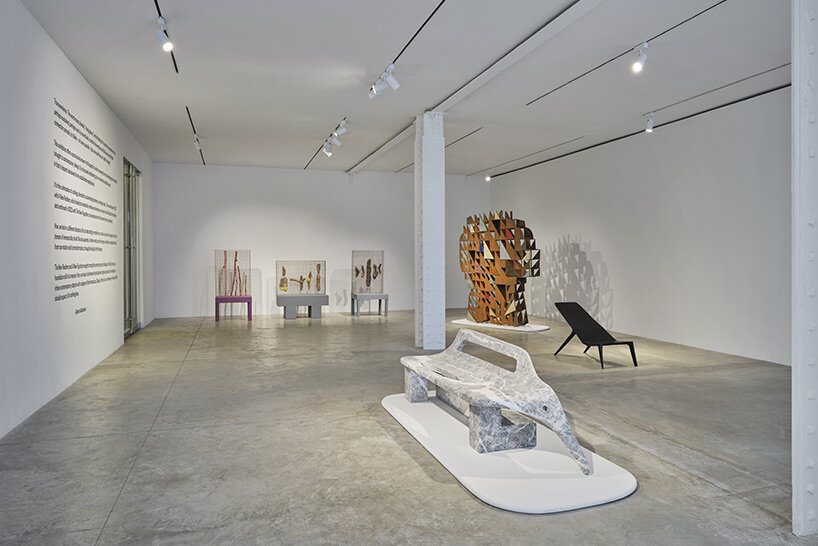
installation view | image © Timothy Doyon, courtesy Friedman Benda
ini archibong
Friedman Benda exhibits Stargazer, a sculptural chair by Ini Archibong, a Californian designer of Nigerian descent. The piece is defined by its slender wooden form and its reclining posture, a symbol of both West African tradition and self-reflection among the universe. The chair recalls West African ‘Birthing Chair,’ forcing the user to take on the position of giving birth while forcing the gaze upward toward nothing but the heavens and ancestors above.
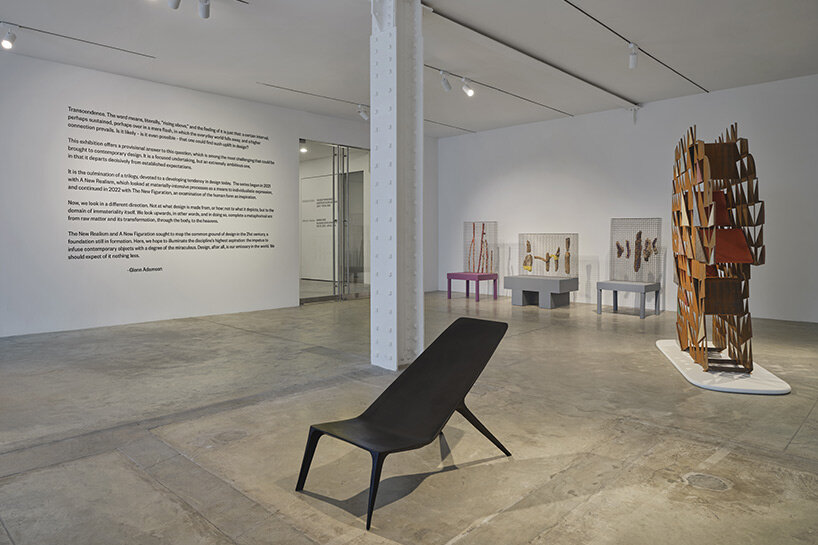
installation view | image © Timothy Doyon, courtesy Friedman Benda
Najla El Zein
Artist Najla El Zein hand-sculpts Lovers Bench from Ceppo, a unique stone formed from compressed marble fragments. Comprising two slumping, interlocking elements, the piece conveys a sense of impossible softness through its solid, heavy material. The stone used in this piece is especially rare within Ceppo quarries, with fragments measuring about fifty centimeters — larger than the usual average of ten centimeters. Weighing seven thousand pounds, the sculpture is at once imposing and gentle, suggesting an intimate moment of conversation between two seamlessly fitting elements. Lovers Bench becomes a symbol of strength and tenderness frozen in time.


